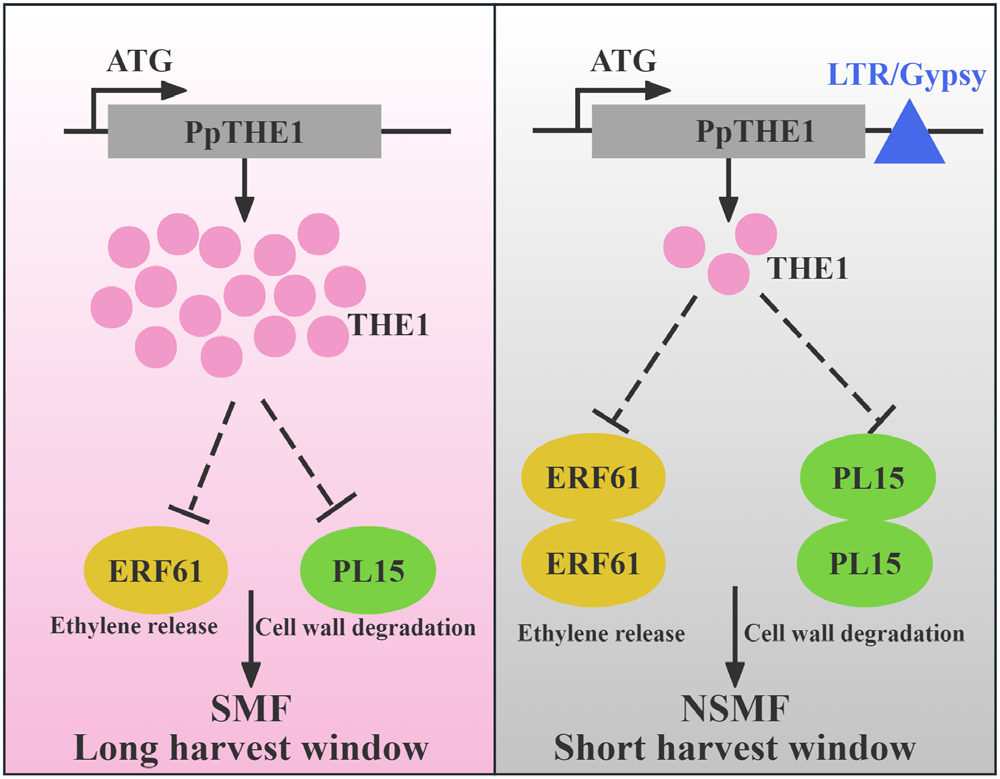
 Dec
25, 2025
Dec
25, 2025
Recently, the Peach Breeding Team from the Zhengzhou Fruit Research Institute of the Chinese Academy of Agricultural Sciences (CAAS) published a research paper titled “Identification of PpTHE1, a cell wall integrity sensor regulating the increased duration of harvest window in slow-melting flesh peach, through the assembly of a chromosome-level reference genome of Prunus persica” in Plant Biotechnology Journal. This study first identified the mechanism by which the receptor-like protein kinase PpTHE1 regulates the formation of the slow-melting flesh trait in peach fruit. Fruit texture is crucial for storage and transport. Currently, peaches are primarily classified as melting-flesh (MF), no...
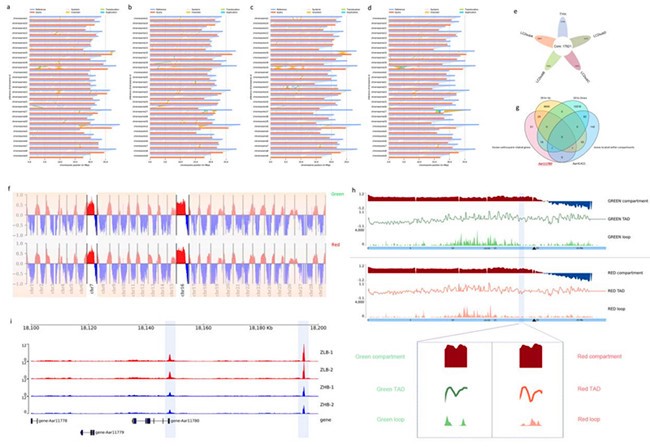
 Oct
16, 2025
Oct
16, 2025
Researchers from the Zhengzhou Fruit Research Institute (ZFRI) of the Chinese Academy of Agricultural Sciences have published a study titled “Combination of 3D chromatin architecture and omics analysis provides insight into anthocyanin regulation in Actinidia arguta” in Horticulture Research. The research is the first to elucidate the 3D genomic basis underlying the differential formation of fruit skin color in this species. The three-dimensional (3D) genome plays a crucial role in regulating gene expression and shaping biological traits. In eukaryotes, higher-order chromatin structure is organized into distinct functional units. While the skin color of A. arguta is primarily either red...
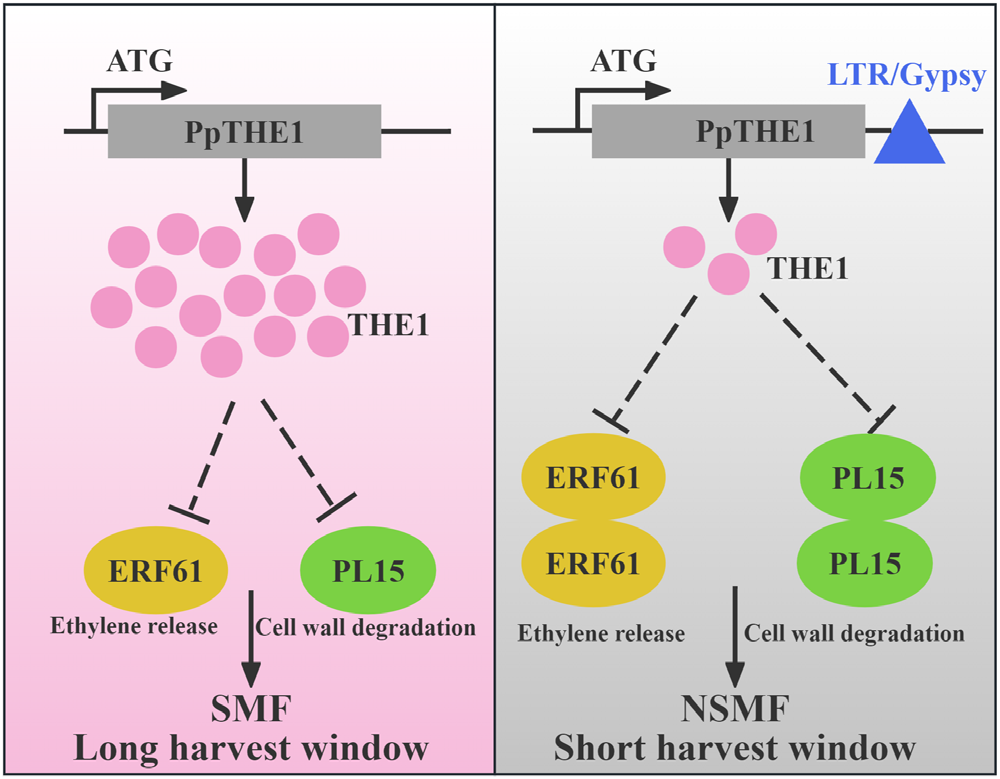
 Sep
30, 2025
Sep
30, 2025
Recently, the Peach Breeding Team from the Zhengzhou Fruit Research Institute of the Chinese Academy of Agricultural Sciences (CAAS) published a research paper titled “Identification of PpTHE1, a cell wall integrity sensor regulating the increased duration of harvest window in slow-melting flesh peach, through the assembly of a chromosome-level reference genome of Prunus persica” in Plant Biotechnology Journal. This study first identified the mechanism by which the receptor-like protein kinase PpTHE1 regulates the formation of the slow-melting flesh trait in peach fruit. Fruit texture is crucial for storage and transport. Currently, peaches are primarily classified as melting-flesh (wit...
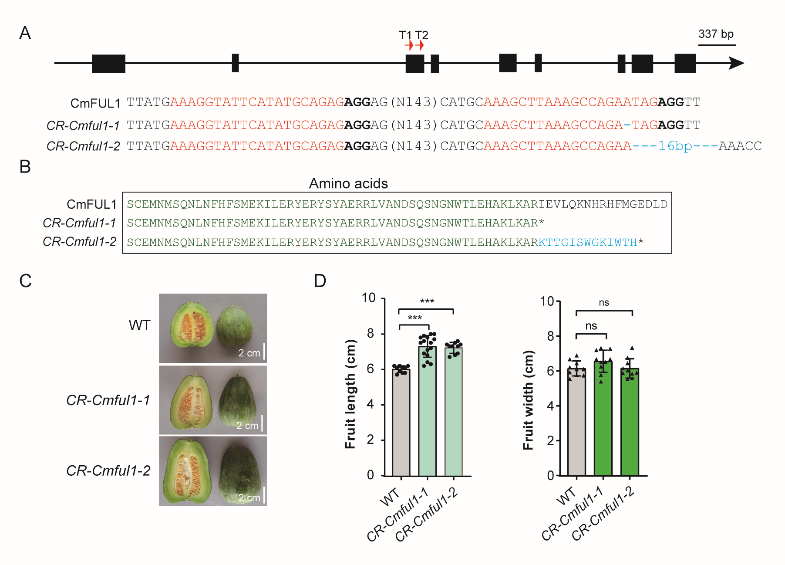
 Sep
30, 2025
Sep
30, 2025
Diversification is a critical direction for fruit breeding. Fruit size and shape are not only key quality traits but also significant manifestations of diversity. Fruit length serves as a primary parameter influencing both fruit size and shape. Melon (Cucumis melo L.) is an ideal model crop for studying fruit development, research on regulatory genes and molecular mechanisms underlying fruit length remains limited. Identifying genes that regulate fruit elongation will deepen our understanding of the genetic basis of fruit size and provide theoretical support for germplasm improvement. Recently, Horticulture Research published the study titled “CmFUL1 was potentially involved in fruit el...
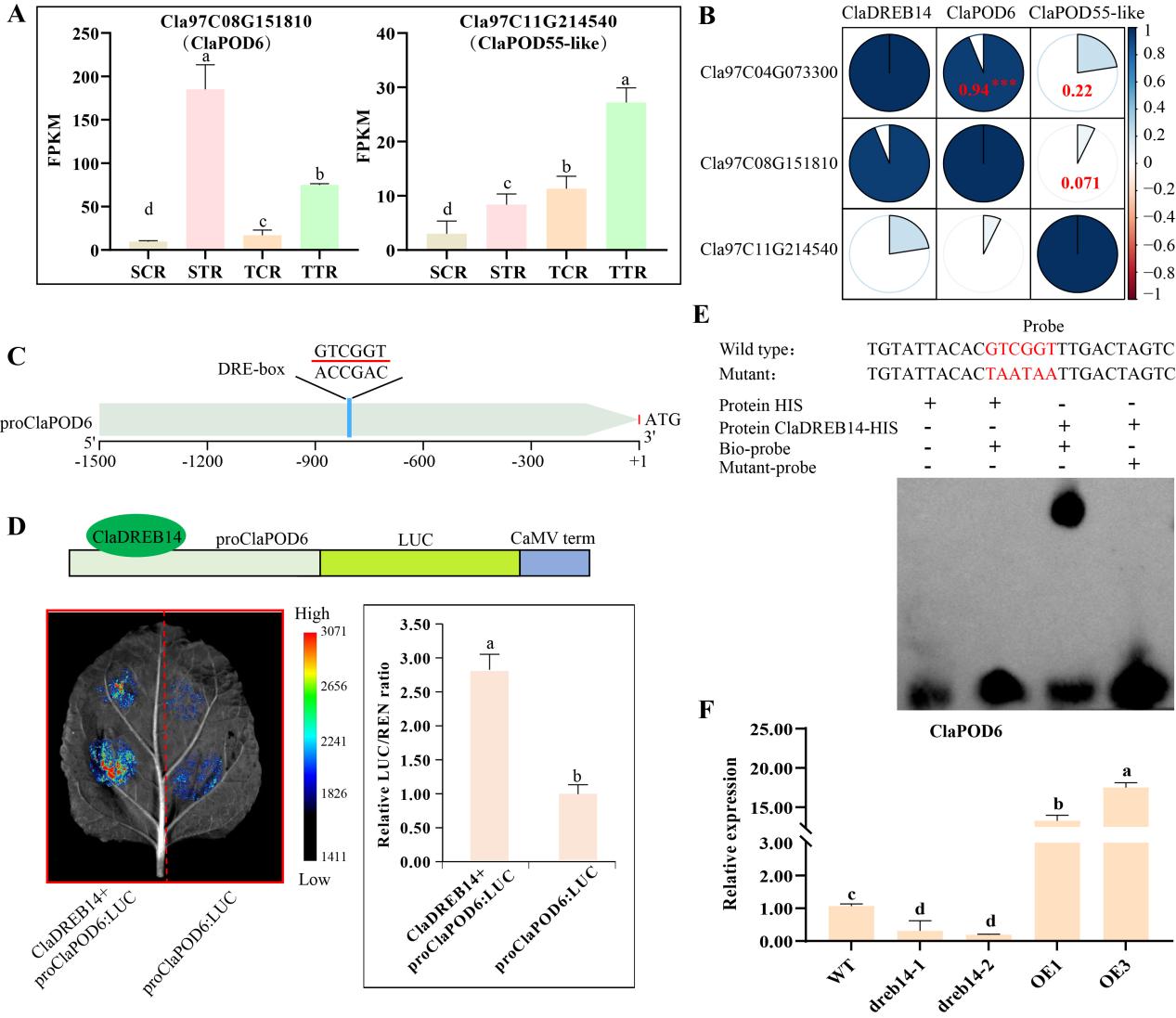
 Sep
30, 2025
Sep
30, 2025
Recently, the Watermelon Genetic Breeding and Cultivation Innovation Team utilized whole-genome identification and functional verification, discovered that ClaDREB14 can enhance salt tolerance by increasing the activity of antioxidant enzymes in watermelon roots. The research findings were published in the 《Horticultural Plant Journal》(a TOP journal in the first zone of the Chinese Academy of Sciences, with an IF=5.7) under the title "ClaDREB14 enhances the salt tolerance of watermelon by positively regulating the expression of ClaPOD6." The research team first identified the DREB family members in the watermelon genome, classified them by constructing a phylogenetic tree, and investiga...
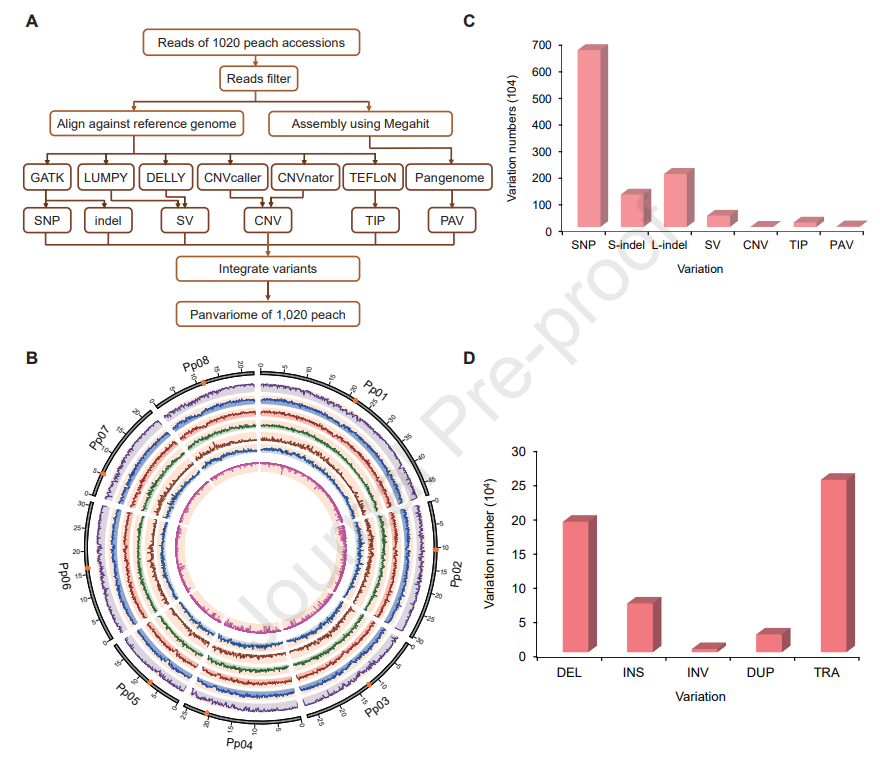
 Sep
30, 2025
Sep
30, 2025
On April 22, the peach resources and breeding group at the Zhengzhou Fruit Research Institute, Chinese Academy of Agricultural Sciences (CAAS), announced a landmark achievement: the construction of the world’s first comprehensive peach pan-variome atlas. This study identified 70.6% novel genomic variants and 3,289 previously unannotated genes, systematically elucidating global phylogenetic relationships and evolutionary trajectories of peach. The team also pioneered a panvariome-based genome-wide association study (GWASPV) strategy, enabling "one-step localization" of agronomic trait-associated genes and functional variants. This innovation significantly enhances gene discovery efficiency...
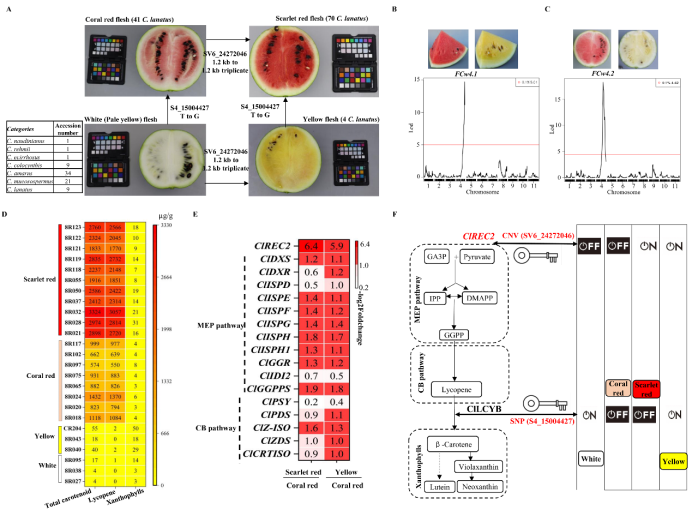
 Sep
30, 2025
Sep
30, 2025
Source: Zhengzhou Fruit Research Institute Recently, the team for the Watermelon and Melon Resources from Zhengzhou Fruit Research Institute of CAAS revealed that a “two-switch” genetic model by integrating two major causative loci, which can explain the formation of the four main flesh colors in different watermelon accessions. These results provide new insights into the regulation of carotenoid biosynthesis and color formation in plants. The related research findings were published in “Molecular Horticulture”. Watermelon fruit flesh displays various colors. Although genetic loci underlying these variations are identified, the molecular mechanism remains elusive. The research team as...
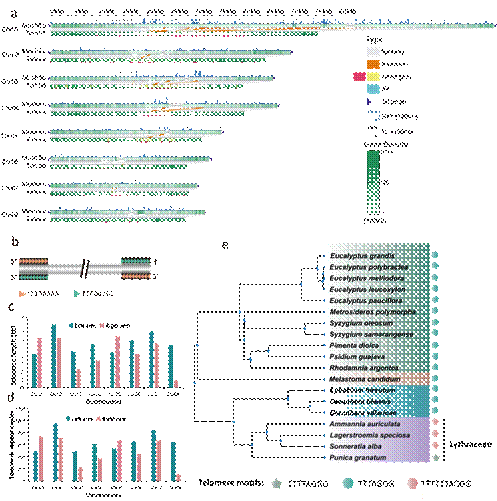
 Sep
29, 2025
Sep
29, 2025
Recently, Zhengzhou Fruit Research Institute of the Chinese Academy of Agricultural Sciences unveiled the genetic mechanisms underlying key economic traits in pomegranate. The study assembled the first telomere-to-telomere (T2T) reference genome for pomegranate, identified candidate loci associated with 15 critical agronomic traits. Furthermore, they established a gene-editing system for pomegranate, elucidated the genetic basis controlling peel color and seed hardness, laying the foundation for molecular breeding. The findings were published in the Plant Biotechnology Journal. Seed hardness and peel color are important pomegranate fruit quality traits, exploring their genetic mechanism...
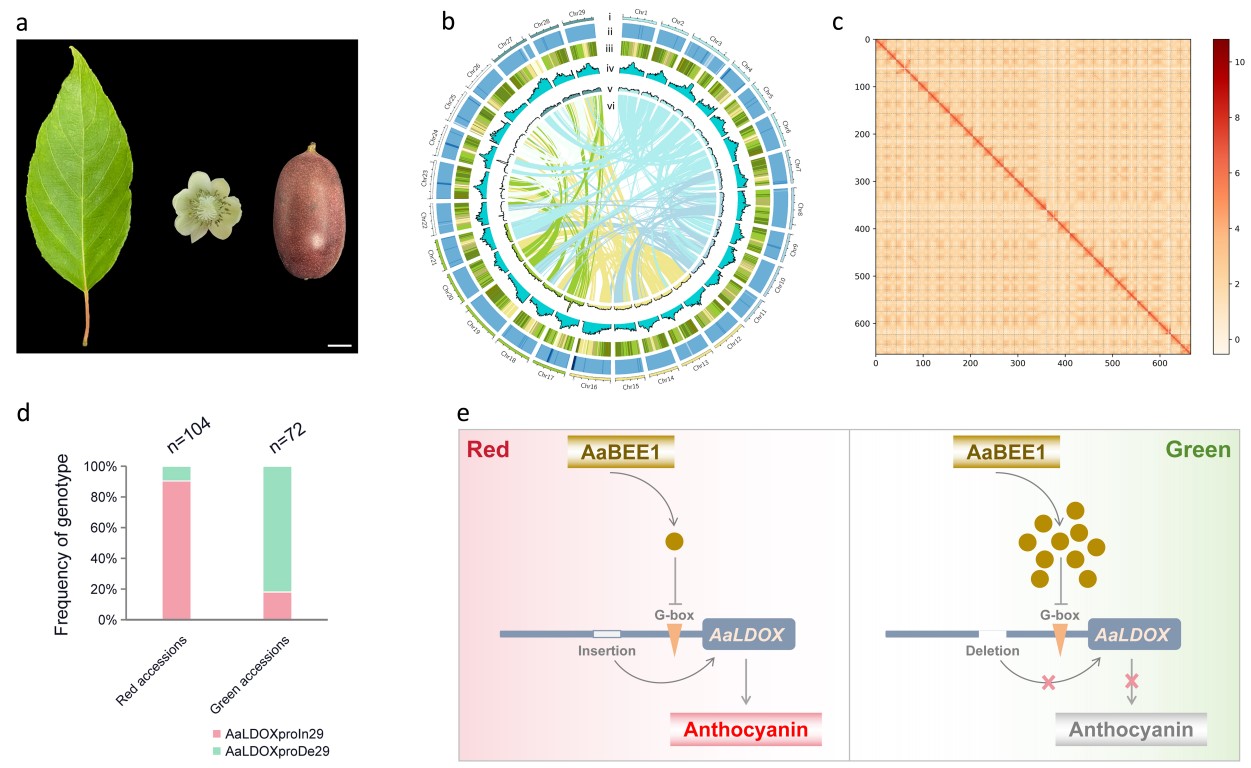
 Sep
29, 2025
Sep
29, 2025
Actinidia arguta (kiwifruit) looking like red ruby always attract customers’ attention in the dazzling fruit market. In recent years, this mini-typed kiwifruit with smaller fruit size and more smooth peel recently is becoming the new favorite because of its unique red fruit. Recently, Group of Kiwifruit Genetic Resources and Improvement of Zhengzhou Fruit Research Institute of Chinese Academy of Agricultural Sciences published paper in ‘Molecular Horticulture’ that assemble the near complete genome of the first whole-red-typed tetraploid A. arguta, and identify AaBEE1-AaLDOX color regulation module, unveiling the mystery of red fruit, laying the foundation for kiwifruit color improvemen...
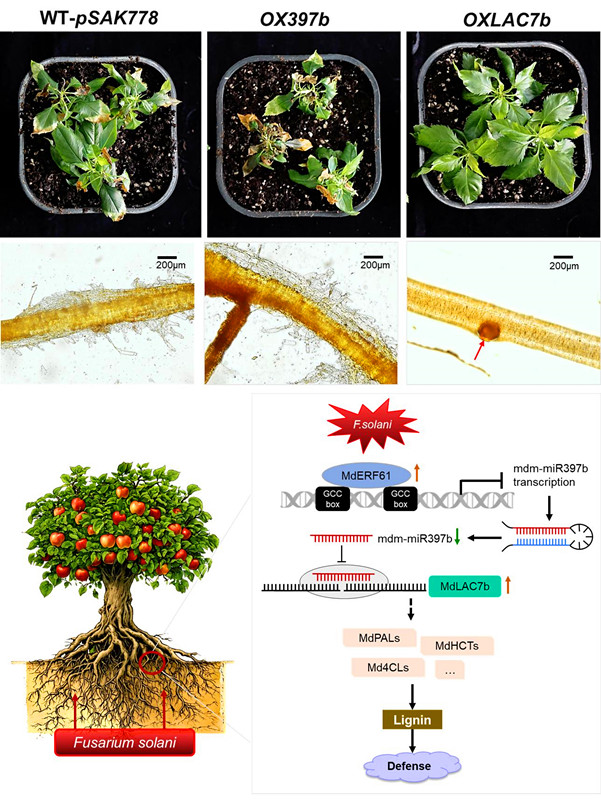
 Nov
01, 2024
Nov
01, 2024
Recently, the Apple Breeding Research Group of the Zhengzhou Fruit Research Institute, Chinese Academy of Agricultural Sciences, published a research paper titled "The MdERF61-mediated mdm-miR397b-MdLAC7b module regulates apple resistance to Fusarium solani via lignin biosynthesis" in Plant Physiology (https://doi.org/10.1093/plphys/kiae518). The study systematically elucidates the molecular mechanism by which MdERF61 transcriptionally regulates the mdm-miR397b-MdLAC7b module, mediating apple's resistance to apple replant disease (ARD). For the first time, stable genetic transformation has been used to obtain apple germplasm resistant to ARD. The phenotypic and molecular mechan...
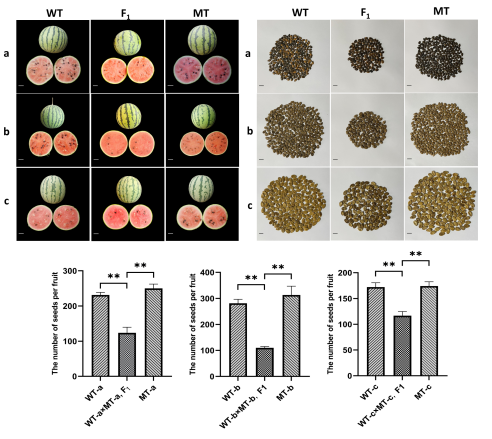
 Nov
01, 2024
Nov
01, 2024
Recently, the watermelon genetic breeding and cultivation team of Zhengzhou Fruit Research Institute and the watermelon breeding team of Vegetable Research Institute of Beijing Academy of Agriculture and Forestry Sciences published a paper entitled "Identification of allelic relationship and translocation region among chromosomal translocation lines that leads to less-seed watermelon" in Horticulture Research. In this study, the translocation region leading to less seeds among chromosomal translocation lines was accurately identified, the genetic mechanism of the chromosomal translocation lines with few seeds was revealed, the molecular markers for the detection of translocation chromosom...
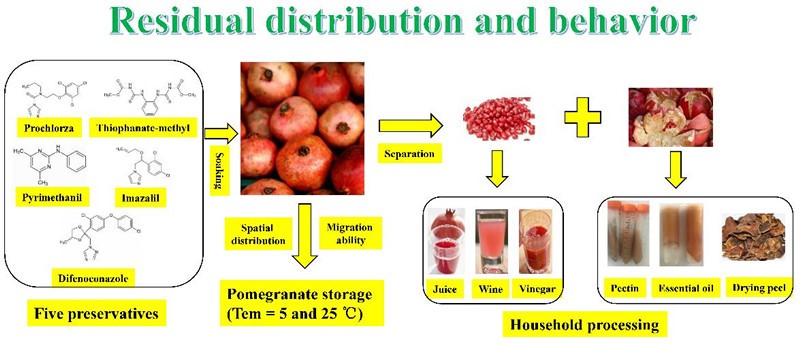
 Nov
01, 2024
Nov
01, 2024
China is the main producer of pomegranates in the world, with its output ranking among the top in the world. Pomegranate is not only consumed fresh, but also processed into a variety of edible consumer products, such as juice, wine, jam, spice (anardana), and even food supplements. Approximately three million tons of pomegranates worldwide are processed into products such as juice (the main product), vinegar, and wine every year. And the amount of antioxidants in pomegranate juice is the highest among all foods. Pomegranate peel accounts for approximately half of the whole fruit weight and contains a high level of phenolic acids, tannins, and flavonoids. Pomegranate peels were often proce...
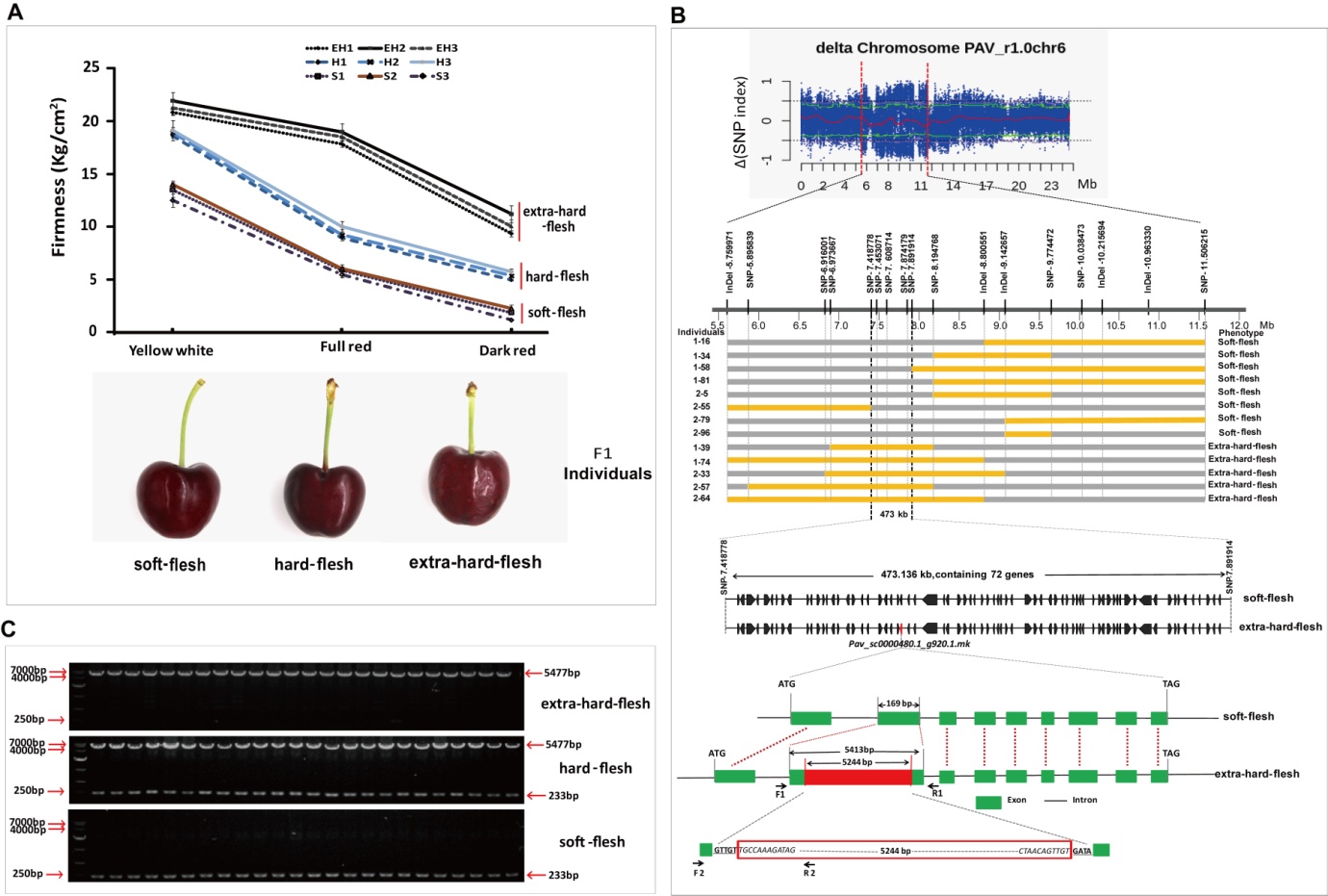
 Nov
01, 2024
Nov
01, 2024
Recently, the researchers from Zhengzhou Fruit Research Institute successfully localized and cloned PavSCPL , a gene controlling sweet cherry fruit firmness through forward genetics, and analyzed its molecular function. The identification of PavSCPL provides a novel and invaluable genetic resource with potential for improvement of fruit firmness and present useful molecular markers for molecular-assisted breeding for fruit firmness in sweet cherry.The results were published in Plant Biotechnology Journal. Identification of the candidate gene PavSCPL controlling fruit firmness and co-segregation analysis for genotyping of the PavSCPL alleles with fruit firmness in F1 population F...
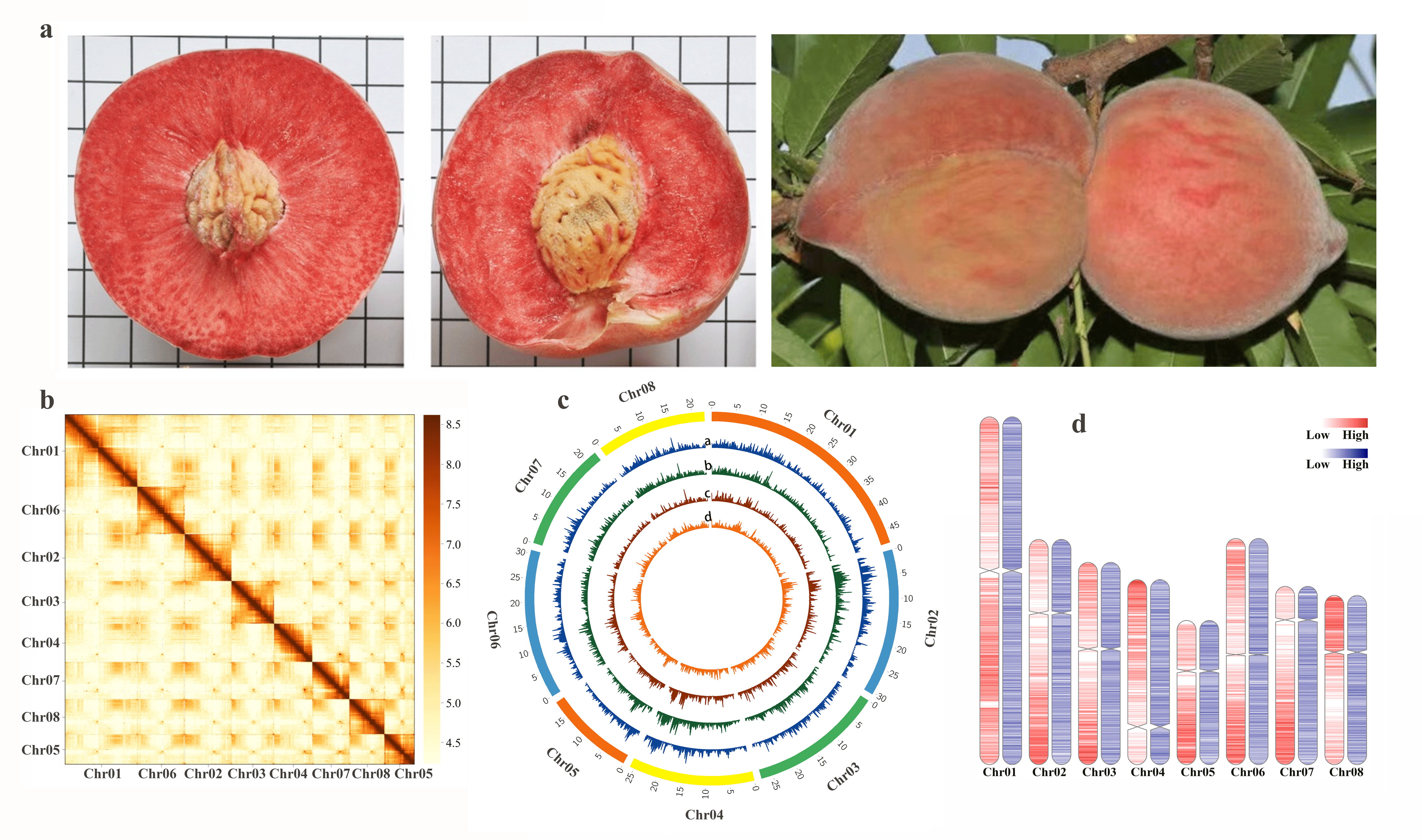
 Mar
20, 2024
Mar
20, 2024
Recently, the researchers from Zhengzhou Fruit Research Institute used the technology of combining genomics and molecular biology to assemble the genes of the blood-flesh peach variety, ‘Tian Jin Shui Mi’ (TJSM), discovered the key genes and genetic variation mechanisms of blood-flesh peach, and clarified the characteristics and maturity of blood-flesh peach. The molecular mechanism of synergistic variation during this period laid the foundation for diversified blood-flesh peach breeding. The results were published in Horticulture Research . The assembled the genome of a blood-fleshed peach Chinese landrace TJSM and found that the genome size of TJSM was 243.5Mb, compared with the reported...
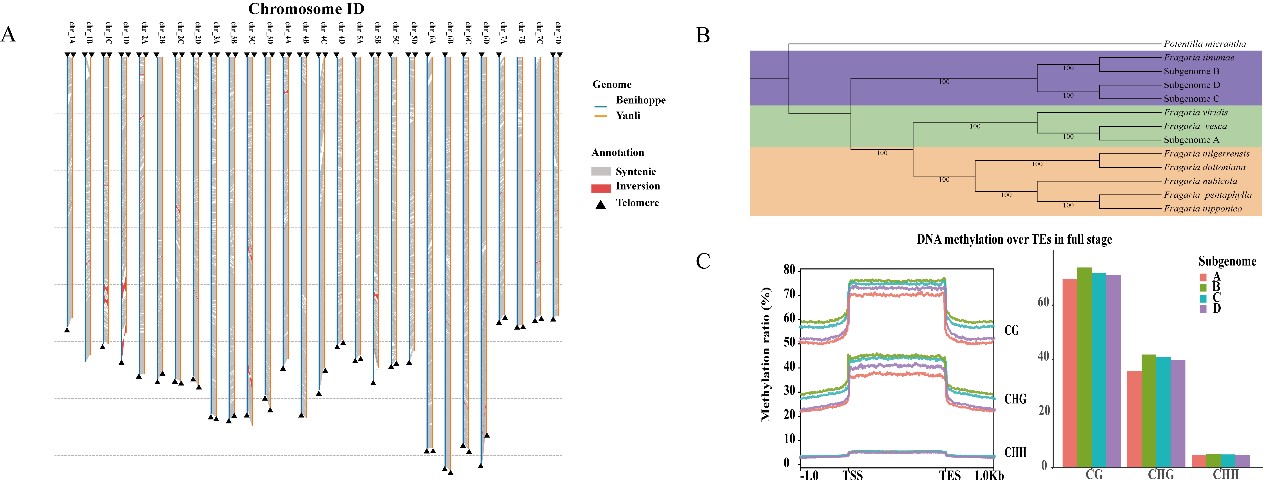
 Mar
20, 2024
Mar
20, 2024
Recently, the Strawberry Germplasm Improvement Team of Zhengzhou Fruit Research Institute and Agricultural Genomics Institute at Shenzhen published a paper entitled " Phased gap-free genome assembly of octoploid cultivated strawberry illustrates the genetic and epigenetic divergence among subgenomes " in Horticulture Research . In this paper, we have assembled a haplotype-phased gap-free octoploid genome of ‘Benihoppe’ and revealed the dynamics of gap-free DNA methylation of subgenomes, which allowed us to uncover the sequence, structure, and epigenetic divergences among the subgenomes. ‘Benihoppe’ has become one of the most widely cultivated varieties in our country for its adaptability, ...
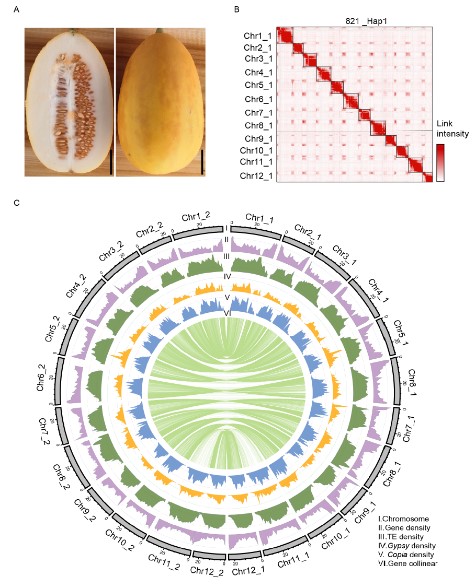
 Mar
20, 2024
Mar
20, 2024
Melon ( Cucumis melo L.) is an important vegetable crop that has an extensive history of cultivation, and has been classified into two subspecies, C. melo ssp. agrestis and C. melo ssp. melo. Furthermore, the difference in their geographical distribution resulted in diverse characteristics between the two subspecies, shaping genomic imprinting in their genomes. Wild germplasm is an important genetic resource in crop breeding because of its high genetic diversity and resistance against diseases. However, all of the previous reported genomes were assembled based on the cultivated melon, the genome of wild and semi-wild melon types is not yet available. Therefore, assembling high-quality wi...
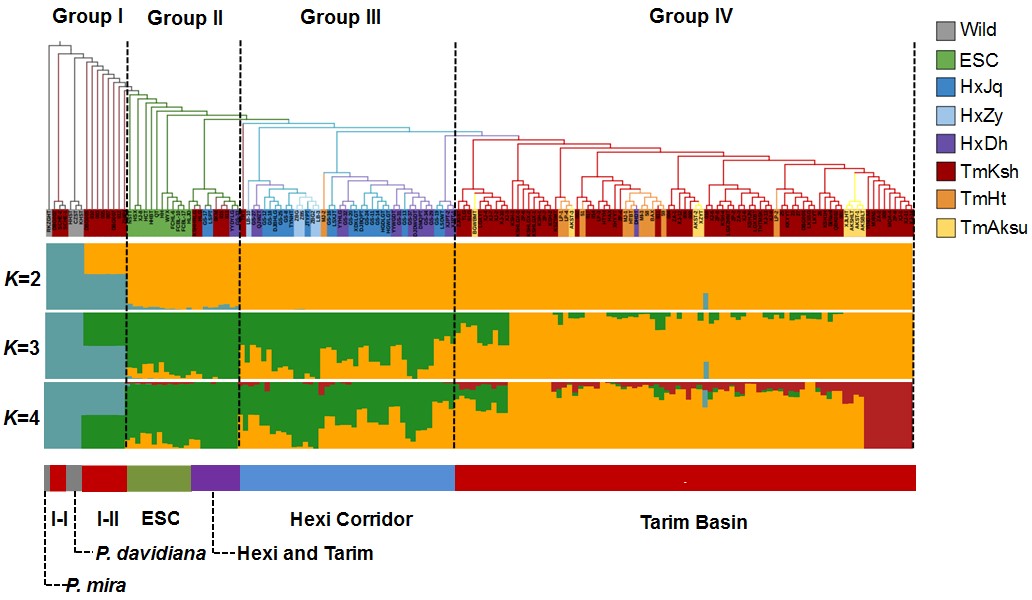
 Mar
20, 2024
Mar
20, 2024
Recently, the peach germplasm resources and genetic breeding team of Zhengzhou Fruit Research Institute of CAAS used genome-wide resequencing technology combined with population genetic analysis to reveal the characteristics of peach genetic diversity in northwest China, providing theoretical support for the protection, development and utilization of peach germplasm resources in northwest China. The related research results were published in Horticultural Plant Journal (IF=5.7). Phylogenetic tree and model-based clustering of 161 peach accessions Peach ( Prunus persica ) originated in China. Hexi Corridor and Tarim Basin are the concentrated distribution areas of peach germplasm resource...
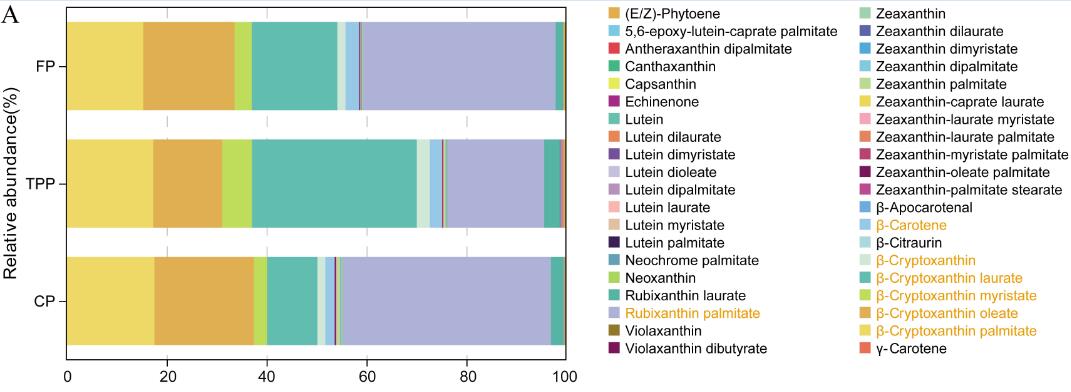
 Mar
20, 2024
Mar
20, 2024
Recently, a study on the chemical composition of peach fruits before and after canning and storage was reported. This research has been published in the journal of 《Food Chemistry》. Characterization of carotenoids during the canning and storage processes Canned food represents an astonishingly innovative technology that still widely influences people's lifestyles. As early as two centuries ago, canned fruits became one of the main types of canned food, which are typically less expensive than both fresh and frozen produce and often have similar nutritional value. According to CCFIA (China Canned Food Industry Association, http://www.topcanchina.com/) statistics, China has been the largest...
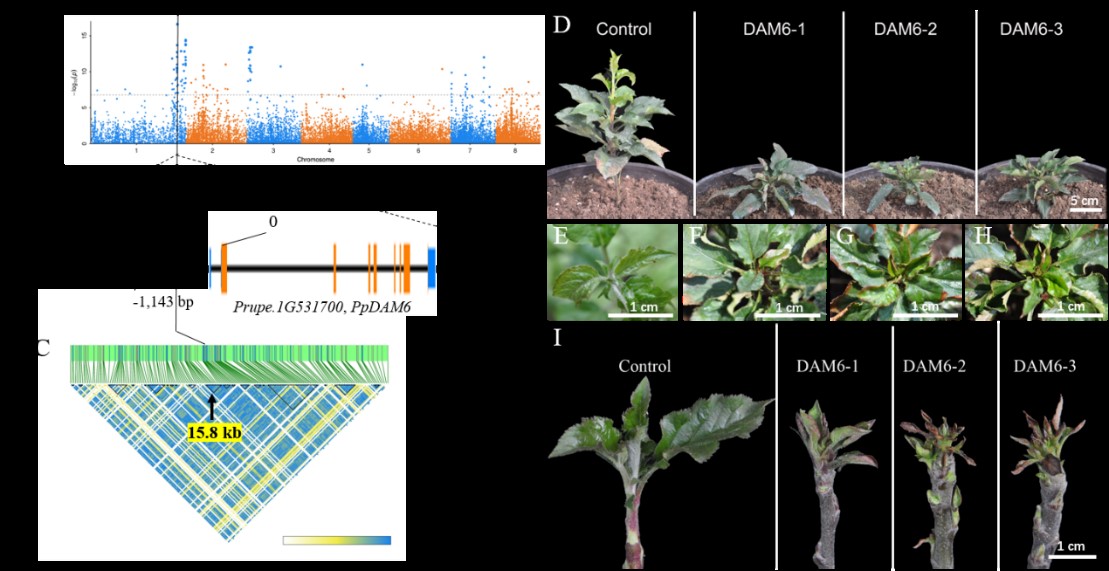
 Mar
20, 2024
Mar
20, 2024
Recently, the Peach Resource and Breeding Group of Zhengzhou Fruit Research Institute, Chinese Academy of Agricultural Sciences (CAAS) has identified a key gene, PpDAM6 , controlling peach chilling requirement (CR) by genome-wide association analysis based on structural variations (SVs), and developed a low CR breeding marker based on this gene. CR is an important agronomic trait of peach, and low CR is the core scientific problem for the development of peach industry in southern China. The results of this study provide a guarantee for molecular breeding of low CR. The result was published on May 22 in Plant Physiology. Genome-wide association study (GWAS) and expression analysis of key ...
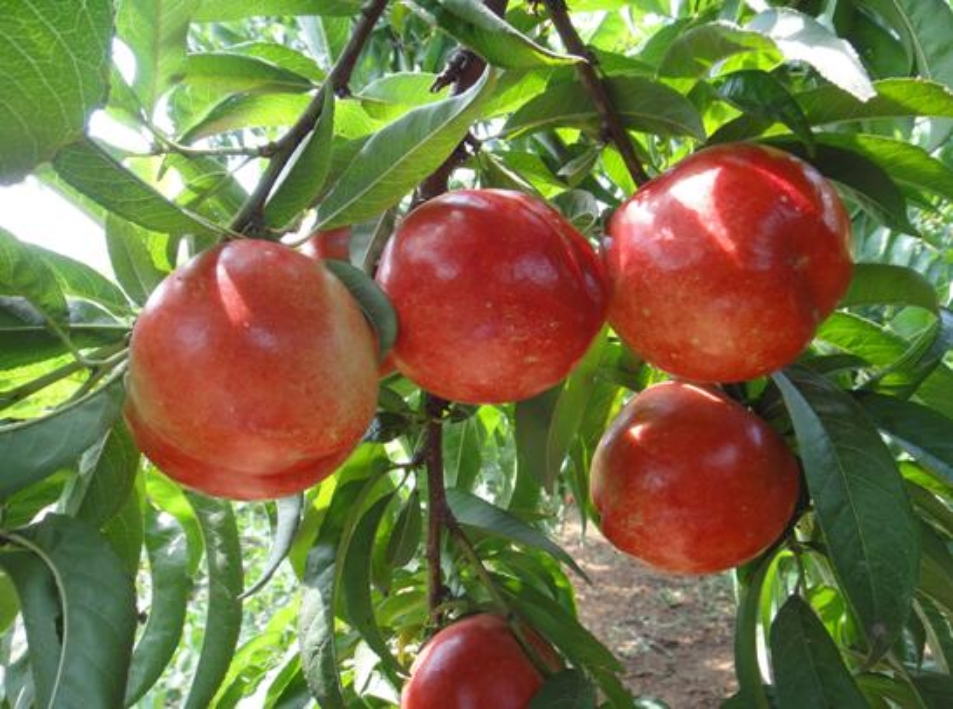
 Aug
05, 2023
Aug
05, 2023
New Nectarine Varieties ‘CN13’ and ‘CN15’ Granted Variety Protection by MOA Source:Zhengzhou Fruit Research Institute Recently, two new nectarine varieties,‘CN13’ and ‘CN15’, has grantedplant variety protection from ministry of agriculture, those varietiesbeing developed by the peach breeding team led by Professor Wang Zhiqiang from Zhengzhou Fruit Research Institute of CAAS. ‘CN13’ is a white flesh table-nectarine variety, the average ripeningdate in Zhengzhouislate June, fruit shape is round and groundcolor of fruit skin is cream white with bright red blush, average fruit weight for ‘CN13’was 201 g and the big fruit weightgreater than 300 g. Fruits of ‘CN13’are clingstone, melting flesh...